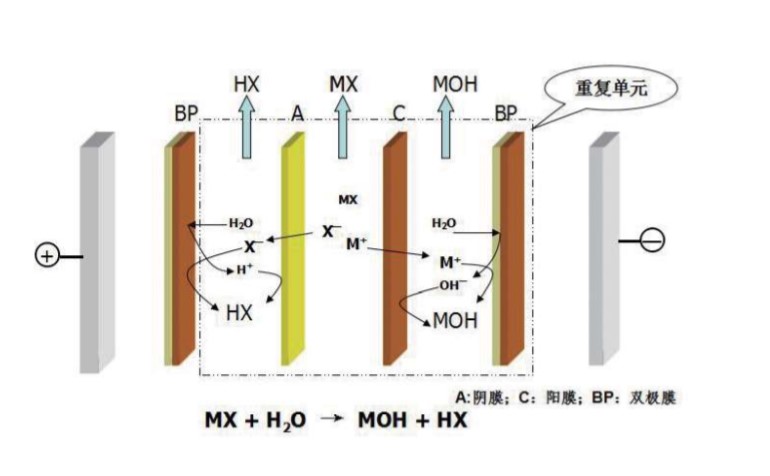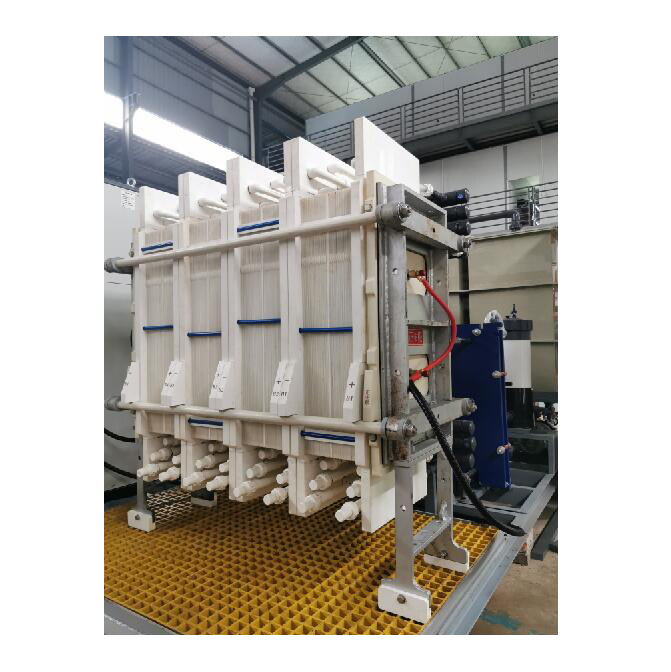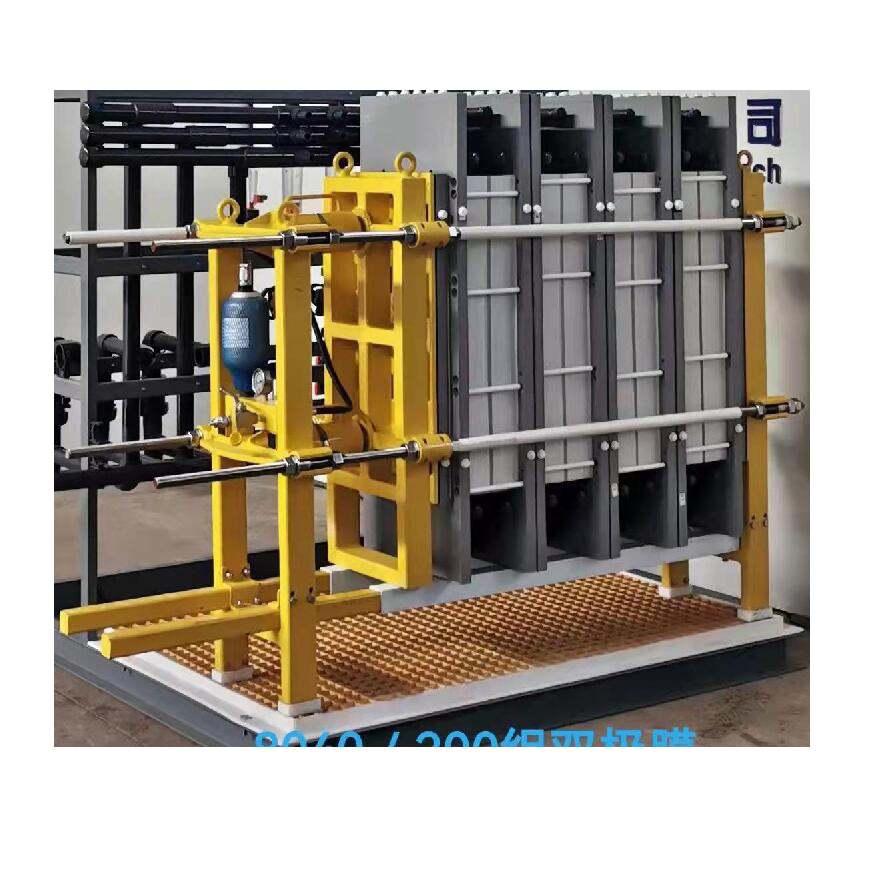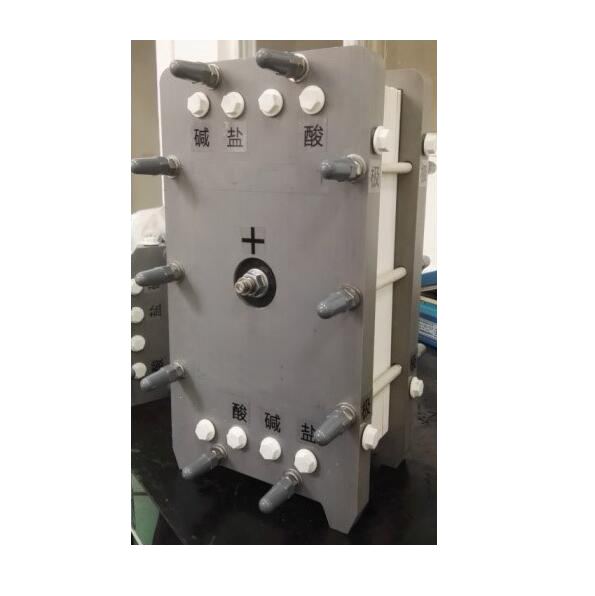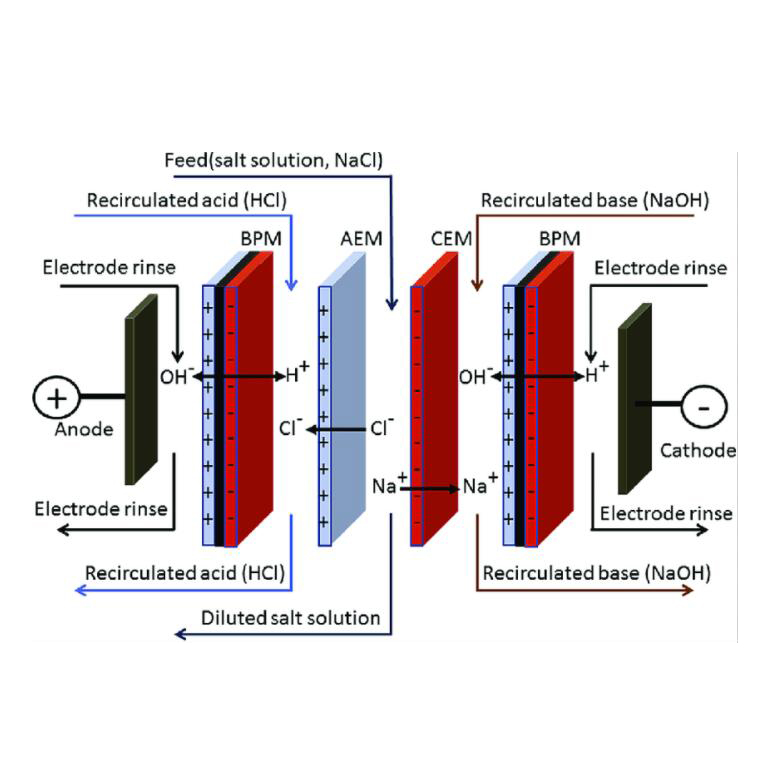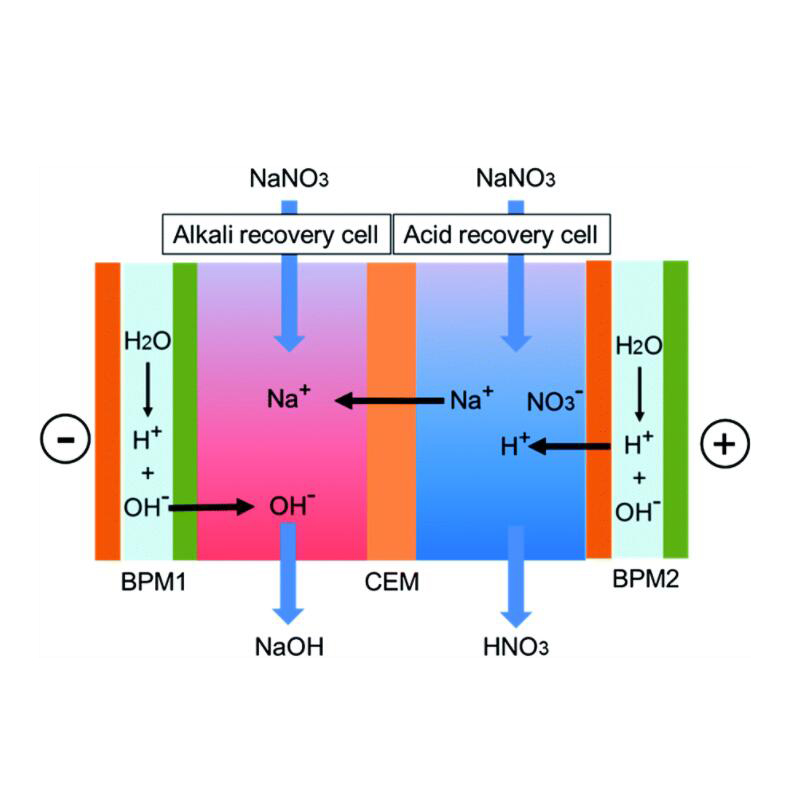Chemical Name:Small Bipolar Membrane Stack
Synonyms:Bipolar Membrane Electrodialysis Stack,Bipolar Ion Exchange Membrane Electrodialysis Stack
Application:Preparation of acid and bases from salts
Min. Order:1 piece
Payment Terms:L/C,T/T,Western Union,Paypal
Lead Time:30-60 days
Month Capacity:3000 pieces
Introduction of the small Electrodialyzer:
The universal automatic electrodialysis experimental equipment, mainly used for experimental research, the main body is the membrane stack, and the core components are bipolar membrane, anion membrane, cation membrane and separator.
A single processing capacity of 3 ~ 10L can be used for technical and economic feasibility studies;
The device is beautiful, compact, and portable, with a small footprint and can be moved at will;
The device is easy to operate and can be started with one click;
The membrane stack is detachable as a whole, and the membrane can be replaced as required;
Concentration concentration can reach more than 200g / L, which is twice as high as the conventional membrane concentration process, which is effective to reduce the volume of concentrated water;
Electrically driven ions have high efficiency and low energy consumption in high salt environment;
Uncharged substances such as borate, silicic acid, COD, etc. will not migrate, and the obtained industrial salt is more pure;
The equipment is a universal experimental device for homogeneous membrane and bipolar membrane.
Technical Specifications(Reference Standard)::
Application |
Scientific research and experiment |
External Dimension mm |
600*600*600 |
Membrane Size mm |
400*200 |
Number of Membrane Groups |
5--20 |
Active Area mm2 |
0.26--1.05 |
Flow Velocity cm/s |
2--4 |
Operating Voltage V |
5--30 |
Operating Current A |
< 21 |
Circulating Flow L/h |
100--300 |
The inlet water requirements of the bipolar membrane are as follows::
1) Suspended matter < 1mg/L;
2) Iron < 0.2mg/L;
3) Si < 9mg/L;
4) Oily and other poorly water-soluble organic matter < 0.1mg/L;
5) Pollution Index (SDI) <3
6) pH: 1~13 (when the water hardness is more than 100mg/L, the pH is less than 6.5)
7) Water temperature: 15-40 Celsius, Optimal operating temperature: 25-35 Celsius;
8) Does not contain post-flocculation substances, that is, substances that will accumulate flocculation or fouling in the membrane module;
9) Total concentration of polyvalent metal ions < 1mg/L
10) Salt concentration>2.0N
11) Free residual chlorine <0.1mg/L, other oxidizing substances can be converted into free residual chlorine
12) Fluorine< 1mg/L
13)Turbidity<1NTU
Application:
The bipolar membrane electrodialysis device is a combination of bipolar membrane and homogeneous anion and cation exchange membrane, and is divided into three compartments or two compartments, namely acid compartment, alkali compartment and salt compartment.
Among them, the three-compartment bipolar membrane electrodialysis is mainly used in the preparation of inorganic salts to prepare corresponding acids and alkalis; such as sodium chloride, sodium sulfate, lithium sulfate, sodium nitrate, ammonium chloride, potassium chloride, etc.
Two-compartment bipolar membrane electrodialysis is mainly used for the production of corresponding organic acids and alkalis from organic acid salts (organic alkali salts are similar); such as tartaric acid, gluconic acid, citric acid, vitamin C, tetramethylammonium hydroxide, etc.

